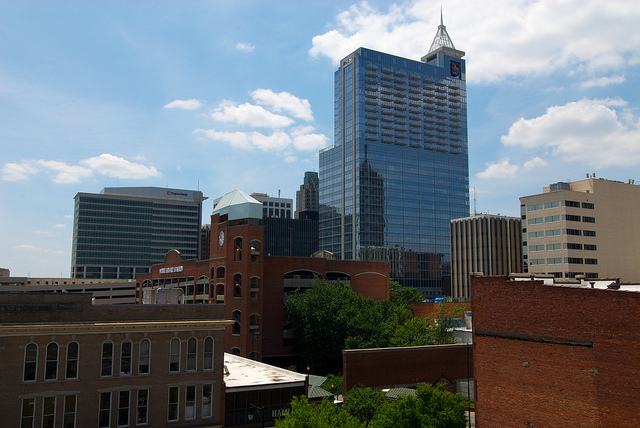
City of Raleigh
Perry E. James III
Raleigh’s Chief Financial Officer, Perry E. James III, presented to city council on Tuesday a document he described as “the most important financial report [of the] year.”
The Comprehensive Annual Financial Report (CAFR) includes financial data from 64 separate funds, a profile of the City of Raleigh, economic conditions and outlook of the city, revenues and expenditures of the 2013-2014 fiscal year broken down into categories, and a report by an independent auditor.
Councilor Odom said at the Council session, “This one looks better than most I’ve seen.”
The introductory section of the CAFR highlights that Raleigh has seen moderate population growth over the past five years, with a June 30, 2014 population estimate of 431,746. While unemployment within the city rose from 2010 to 2011, it has decreased significantly since then, coming in at 5.2 percent by June 30, 2014.

Raleigh receives more than 10 million visitors annually for conferences, events, and other activities and the Convention Center alone held 219 events with approximately 481,500 attendees during a twelve-month period that ended on June 30, 2014.
According to the report, “The Raleigh area’s excellent business environment, its nationally ranked universities, and the outstanding health care facilities are some of the many attributes that attract people to the area.”
The report further states that “improving economic conditions, combined with diligent management of both revenues and expenses have allowed the City to maintain an excellent financial position and exceed fund balance objectives for 2014.”

kakissell/Flickr Creative Commons
Raleigh has a number of features that attract people to the area
Revenues and expenditures were broken down into two primary categories: Governmental activities and business-type activities. Revenues for governmental activities included sales and property taxes, while revenues for business-type activities charges for services. Expenditures for those two categories included “public safety” and “water and sewer” respectively.
For the fiscal year ending on June 30, 2014, the city’s revenues considerably exceeded its expenditures, by a total just shy of $100 million. City revenues saw an increase of three percent over 2013; however, expenditures were up eight percent.

Also in the report is information about the city’s 10-year Capital Improvement Program (CIP), which plans ahead for capital needs. Phase I, the first five years of the CIP, spans from fiscal year 2013-2014 to 2017-2018. The major areas targeted in phase one are transportation, public utilities, parks, housing, stormwater utility, technology and general public improvements.
The City’s financial documents were audited by Cherry Bekaert LLP, a firm of licensed certified public accountants. In the firm’s own report contained within the CAFR, it states, “In our opinion, the financial statements referred to above present fairly, in all material respects, the respective financial position of the governmental activities, the business-type activities, each major fund, and the aggregate remaining fund information of the City …”
